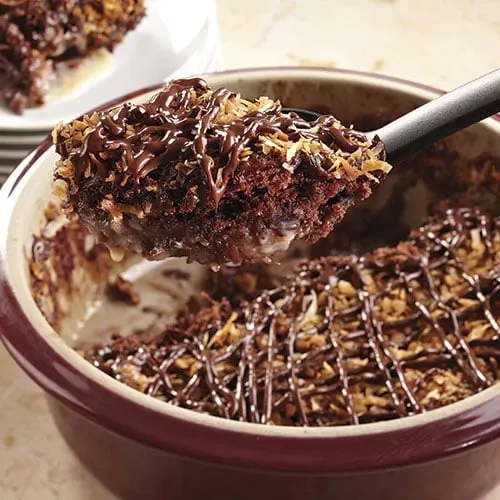Table of Contents
Tired of dry, crumbly cakes that call themselves "lava"? Let's be honest, a true lava cake is a spectacle. It's that moment when the spoon breaks through a delicate crust, unleashing a river of warm, dark chocolate onto the plate. Now, imagine taking that classic indulgence and infusing it with the signature flavors of German chocolate cake. We're talking about that irresistible blend of sweet coconut and toasted pecans, usually reserved for frosting. It sounds ambitious, maybe even a little messy to put inside a molten cake, but the result is pure decadence that stands apart. This isn't a basic dessert; mastering the german chocolate lava cake recipe means elevating your game considerably. This guide strips away the guesswork and the sad, underbaked attempts. We'll pinpoint the exact ingredients you need, no substitutions that compromise quality or texture. Then, we'll lay out the precise steps, ensuring you nail that crucial balance between baked exterior and molten core every single time. Forget disappointment; prepare for applause. We're about to make your kitchen the source of something truly spectacular: the perfect german chocolate lava cake.
Why a German Chocolate Lava Cake Recipe is a Game Changer
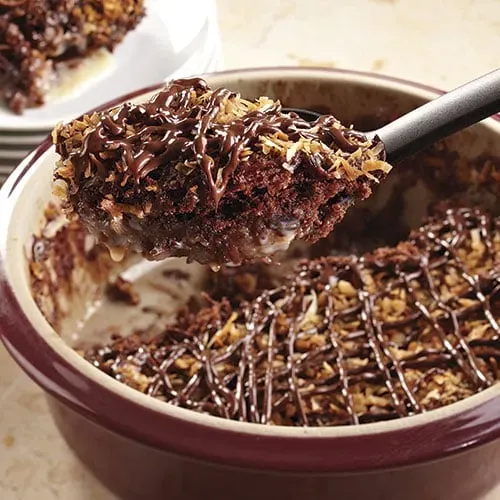
Why a German Chocolate Lava Cake Recipe is a Game Changer
Beyond the Basic Chocolate Ooze
Alright, let's talk cake. We've all had the standard chocolate lava cake, right? Delicious, sure, but after the third one, it starts feeling a bit... expected. This is where the german chocolate lava cake recipe steps in and completely flips the script. You're not just getting that warm, molten core; you're introducing a whole new layer of flavor and texture. The coconut and pecan elements, usually relegated to a frosting on top of a different cake, get integrated into the heart of this molten wonder. It takes something familiar and gives it a significant upgrade, making it a genuinely exciting dessert again.
Elevating Your Dessert Reputation
Think about it. You serve a regular lava cake, people nod, maybe give a polite "yum." You serve a german chocolate lava cake, and suddenly people are asking for the recipe before they've even finished the first bite. It shows you put in that extra thought, that you're not afraid to mess with a classic in a brilliant way. It's the difference between serving a basic chocolate chip cookie and serving one with smoked sea salt and browned butter. One is good; the other is memorable. Mastering this particular german chocolate lava cake recipe makes you *that* dessert person.
- Adds unique texture (pecans, coconut)
- Introduces complex flavor notes
- Moves beyond standard chocolate
- Impresses guests with novelty
- Provides a satisfying baking challenge
The "Wow" Factor is Off the Charts
I remember the first time I served this. My friend Sarah, who fancies herself a dessert connoisseur, took a bite and just stopped talking. Her eyes got wide. That's the reaction you're aiming for. It's not just about the taste; it's the surprise of finding those classic German chocolate flavors nestled inside that warm, flowing center. It’s unexpected, delightful, and frankly, a little bit smug when you pull it off perfectly. This german chocolate lava cake recipe delivers a guaranteed "wow" moment, and honestly, that's half the fun of baking, isn't it?
Gathering the Goods: Essential Ingredients for Your German Chocolate Lava Cake Recipe
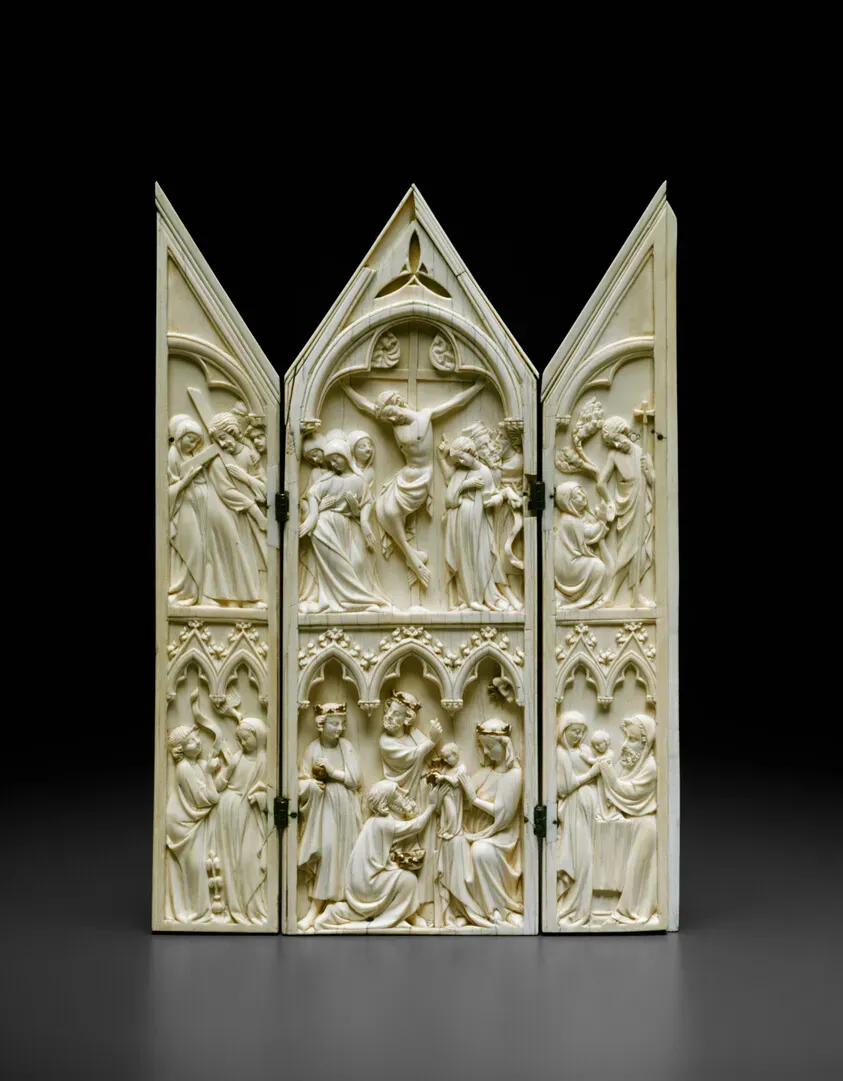
Gathering the Goods: Essential Ingredients for Your German Chocolate Lava Cake Recipe
Quality is Non-Negotiable
Alright, let's get down to brass tacks. You can't make a silk purse out of a sow's ear, and you certainly can't make a show-stopping german chocolate lava cake recipe with questionable ingredients. The chocolate is the absolute star here. Skip the waxy chips that barely melt; you need high-quality bittersweet or semisweet chocolate. Think good baking bars, the kind you might actually snack on. The butter matters too. Use unsalted butter, and make sure it's fresh. These foundational elements dictate the richness and the crucial molten texture. Skimping here is like building a mansion with twigs and spit – it simply won't hold up when things get warm and gooey.
The German Chocolate Twist and Other Necessities
Now for the German chocolate flair. This german chocolate lava cake recipe isn't just chocolate; it incorporates those distinct coconut and pecan notes. You'll need shredded sweetened coconut and chopped pecans. Toasting those pecans lightly beforehand can add another layer of depth. Beyond that, you'll need the usual suspects: fresh eggs for structure and richness, granulated sugar for sweetness (obviously), a touch of all-purpose flour to give the cake just enough body to hold its shape while letting the center flow, a pinch of salt to balance the sweetness, and cocoa powder for an extra punch of chocolate flavor. Don't underestimate the power of good vanilla extract either; it rounds everything out.
- High-quality bittersweet or semisweet chocolate (baking bars work best)
- Unsalted butter
- Shredded sweetened coconut
- Chopped pecans (toasted optional)
- Large eggs
- Granulated sugar
- All-purpose flour
- Salt
- Unsweetened cocoa powder
- Vanilla extract
Whipping Up the Batter: Following the German Chocolate Lava Cake Recipe Steps
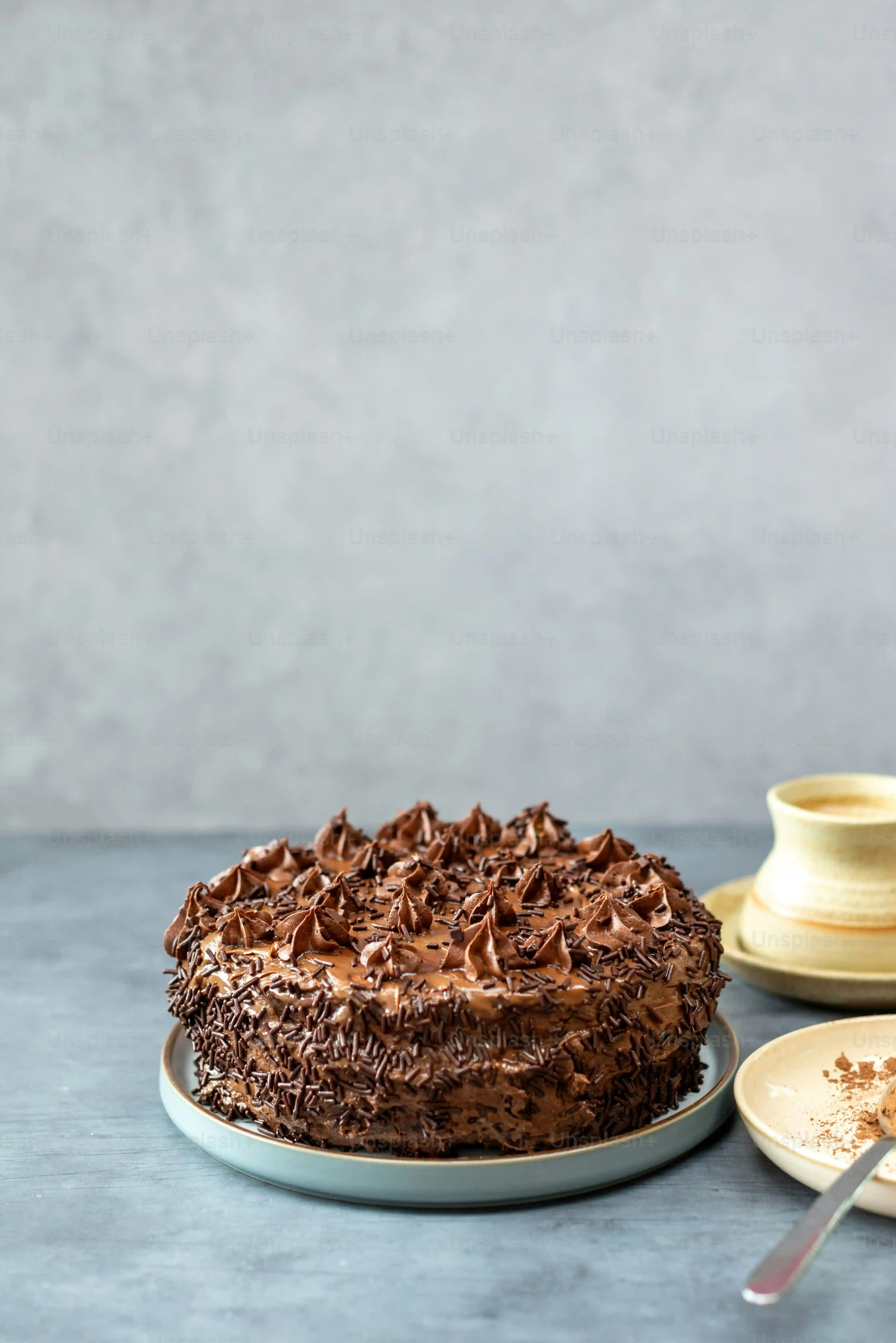
Whipping Up the Batter: Following the German Chocolate Lava Cake Recipe Steps
Melting Matters: The Foundation of Your Lava
so you've got your high-quality chocolate and butter ready. This is where the magic starts, or where it goes horribly wrong if you rush it. You need to melt these two together gently. A double boiler is classic, but honestly, the microwave works just fine if you're careful. Chop your chocolate into small, uniform pieces – this helps it melt evenly. Combine it with your butter in a microwave-safe bowl. Zap it in short bursts, maybe 30 seconds at a time, stirring well after each one. Resist the urge to just blast it on high power until it's a puddle; you'll scorch the chocolate, and there's no coming back from that burnt, bitter mess. You want it smooth, glossy, and completely melted, with no grainy bits hanging around. This forms the rich, chocolatey base for your german chocolate lava cake recipe.
Eggs, Sugar, and Aeration: Building the Structure
While your chocolate mixture cools slightly – seriously, don't pour hot chocolate onto raw eggs unless you're aiming for scrambled dessert – grab a separate bowl. Crack your eggs and whisk them with the sugar. You're not just mixing here; you're incorporating air. Whisk vigorously until the mixture is lighter in color and slightly thickened. It should look a bit foamy, like a pale yellow cloud. This aeration is key. It helps give the cake just enough lift and structure around that heavy, molten center. Skipping this step means a denser, less impressive cake surrounding your lava.
- Chop chocolate finely for even melting.
- Melt chocolate and butter in short microwave intervals, stirring between each.
- Cool melted chocolate mixture slightly before combining with eggs.
- Whisk eggs and sugar until light, foamy, and pale yellow.
- Ensure no lumps remain in the egg/sugar mixture.
Bringing It All Together: The German Chocolate Fusion
Now for the grand finale of the batter phase for this german chocolate lava cake recipe. Gently fold the slightly cooled chocolate-butter mixture into your whisked eggs and sugar. Don't overmix; just combine until it's uniform. Then, whisk in your sifted flour, cocoa powder, salt, and vanilla extract. Mix until *just* combined – overmixing develops gluten, which makes cakes tough, and you want tender cake surrounding that lava. Finally, fold in your shredded coconut and chopped pecans. Distribute them evenly so every bite gets that signature German chocolate crunch and chew. The batter will be thick and rich. It won't look like typical cake batter, more like a dense pudding. That's exactly what you want before portioning it into your prepared ramekins.
Baking to Gooey Perfection: The Key to the Lava in Your German Chocolate Lava Cake
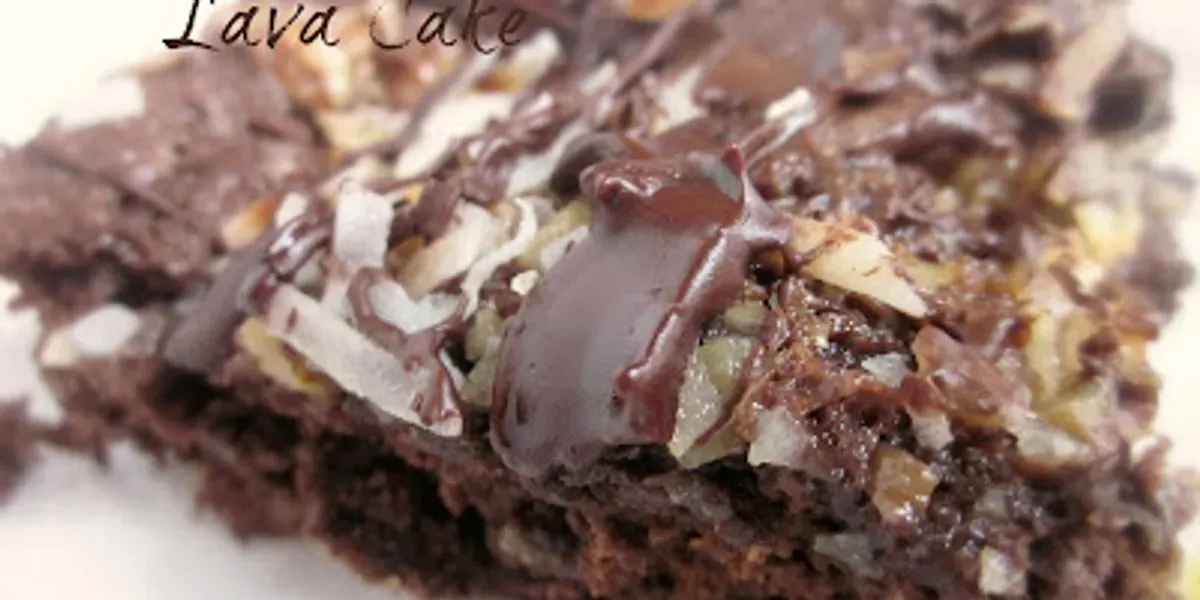
Baking to Gooey Perfection: The Key to the Lava in Your German Chocolate Lava Cake
Timing is Everything for the Perfect Lava
you've got your luscious batter, complete with the German chocolate goodies, portioned into those waiting ramekins. This is the moment of truth, the step that separates a decent chocolate cake from a show-stopping molten masterpiece. Baking to gooey perfection for your german chocolate lava cake recipe hinges entirely on timing and temperature. You need a hot oven – typically 400°F (200°C) – to quickly set the outside edges while leaving the center gloriously liquid. Think of it like searing a steak; you want a crust, but a rare center. Overbake it by even a minute or two, and you've just got a dense chocolate cake with some nuts and coconut in it – utterly defeating the purpose. Keep a close eye on them; they're usually ready in 10-13 minutes. The edges should look set and slightly pulled away from the ramekin, while the very center still looks soft and jiggly when you give the ramekin a gentle nudge. If it looks fully set on top, you've gone too far. It's a delicate dance, requiring your full attention.
What's the biggest mistake people make when baking lava cakes?
Serving Your Warm German Chocolate Lava Cake Creations
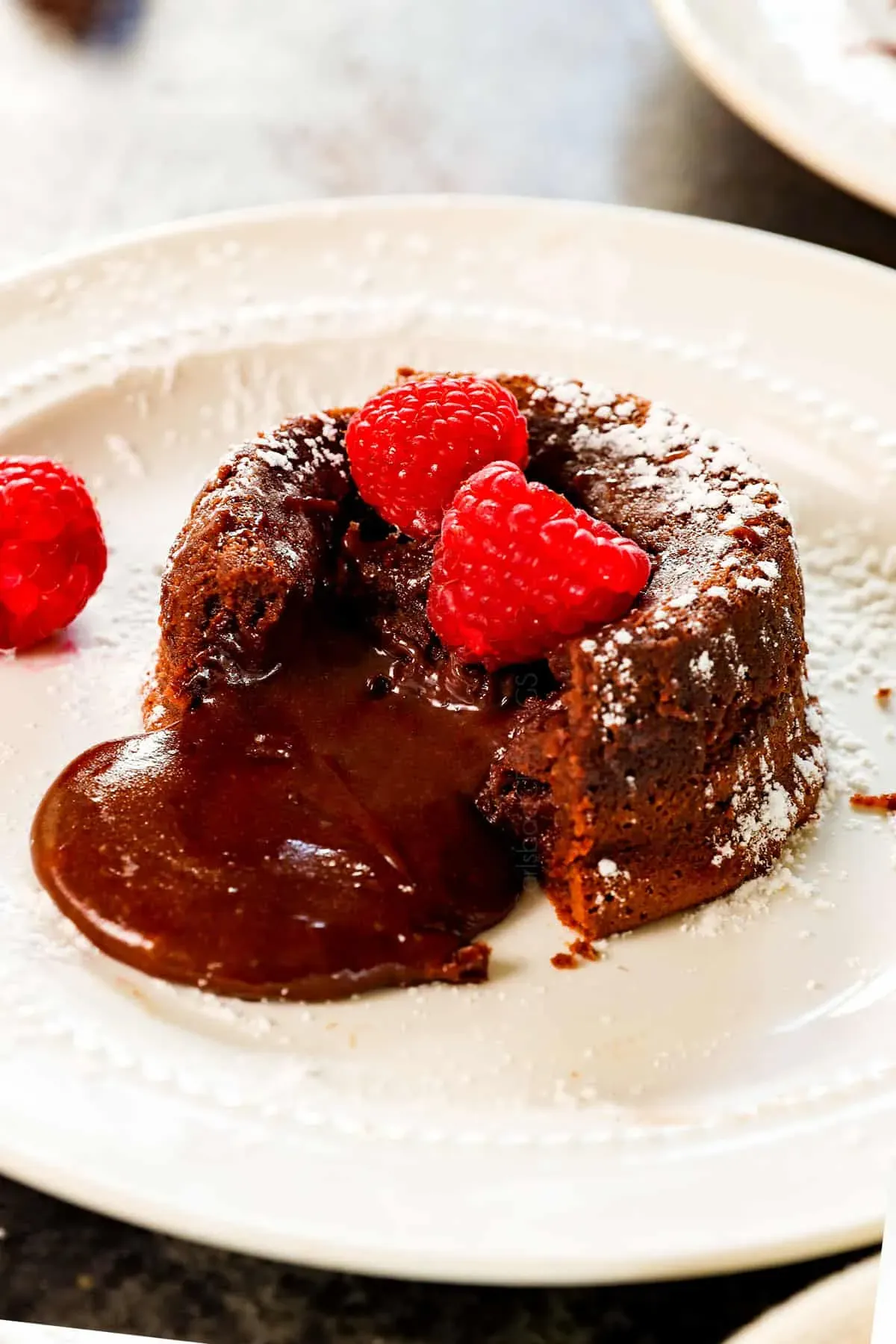
Serving Your Warm German Chocolate Lava Cake Creations
Presentation is Half the Battle (The Gooey Half)
so you've successfully baked these beauties, and they've had a crucial five minutes to sit and contemplate their molten destiny. Now comes the moment of truth: getting them out of the ramekins and onto the plate without disaster. This german chocolate lava cake recipe demands a certain level of care at this stage. The edges should have pulled away slightly, making inversion easier. Place a serving plate upside down over the ramekin, hold them together firmly (use oven mitts, seriously, they're still hot!), and flip with confidence. Give the ramekin a gentle shake if needed, then carefully lift it off. If you greased and floured those ramekins properly, it should slide right out, revealing a perfect little chocolate dome ready to erupt. Don't panic if one sticks a little; sometimes a gentle nudge with a knife around the edge helps, but mostly it comes down to that initial prep and not overbaking.
- Ensure cakes cool for 5 minutes before inverting.
- Use oven mitts when handling hot ramekins.
- Place plate upside down over ramekin.
- Hold firmly and flip quickly.
- Gently lift the ramekin off the cake.
Your German Chocolate Lava Cake Triumph
So there you have it. You navigated the potential pitfalls, measured with precision, and trusted the process. That distinct aroma filling your kitchen isn't just baked goods; it's proof you conquered the challenge. No more settling for mediocre; you now possess the blueprint for a truly exceptional dessert. Serve it warm, watch the molten center flow, and accept the inevitable compliments. You earned them.
